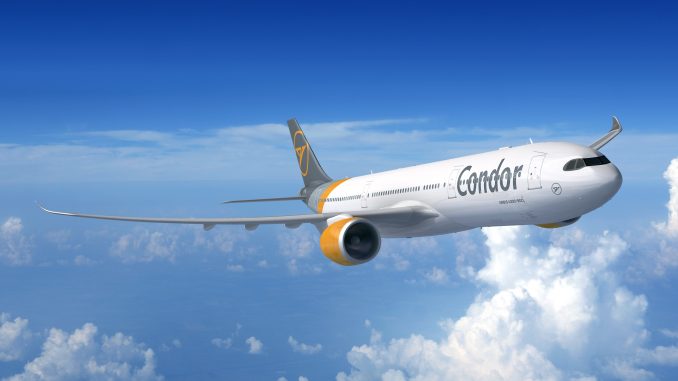The 2-litre aircraft is ready for take-off
Germany’s most popular leisure carrier Condor has decided to order 16 Airbus A330-900neo of the latest generation. The Supervisory Board has already agreed. As the German launch customer for the Airbus A330neo, Condor is thus focusing on latest technology, maximum efficiency and the highest level of customer comfort. Fuel consumption per passenger per 100 kilometres will be 2.1 litres, which makes Condor the European frontrunner on long-haul flights. The first aircraft is expected in autumn 2022, whilst the replacement of the entire long-haul fleet is scheduled to be completed by mid-2024.
“We are introducing the two-litre aircraft into our operations and will be setting new standards: with our modern long-haul fleet, we will inseparably combine sustainability and holidays with Condor in future. On board the quietest cabin in the world on an aircraft of this size, our guests can also expect the highest level of comfort in a brand new Business, Premium Economy and Economy Class,” says Ralf Teckentrup, CEO of Condor. “With our fleet modernisation we reach another milestone in our company’s history and take the next step towards the future.”
The Airbus A330-900neo is designed with innovative enhancements for exceptional efficiency while offering the highest levels of comfort. Guests relax with a significantly enhanced sense of space, regardless of the booking class, and enjoy the latest generation of in-flight entertainment and connectivity on board. Thus, the Airbus A330neo sets new standards with 20 per cent lower CO2 emissions and significant fuel savings. In fact, the Airbus A330neo is the first aircraft in the world to already be certified for the regulatory reduction in CO2 emissions, which will apply as of 2028.
All details of the contracts were not disclosed. By using the new long-haul aircraft, Condor is not only reducing its emission values, but also its operating costs and further improving its already particularly lean cost structure.























